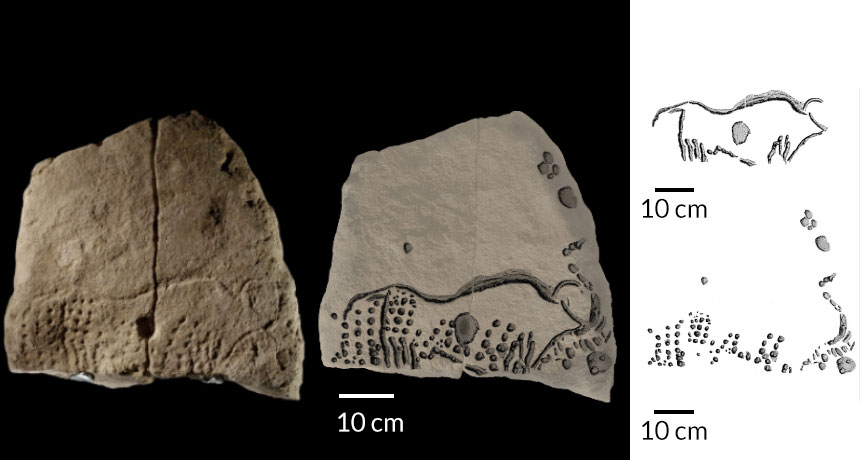Cow carved in stone paints picture of Europe’s early human culture

This stone engraving of an aurochs, or wild cow, found in a French rock-shelter in 2012, provides glimpses of an ancient human culture’s spread across Central and Western Europe, researchers say.
Rows of dots partly cover the aurochs. A circular depression cut into the center of the animal’s body may have caused the limestone to split in two, says Stone Age art specialist Raphaëlle Bourrillon of the University of Toulouse-Jean Jaurès in France. Radiocarbon dating of animal bones unearthed near the discovery at Abri Blanchard rock-shelter put the engraving’s age at roughly 38,000 years, Bourrillon and colleagues report online January 24 in Quaternary International.
The rock art is similar to some engravings and drawings found at other French and German sites, including the famous Chauvet Cave (SN: 6/30/12, p. 12), and attributed to the Aurignacian culture, which dates to between 43,000 and 33,000 years ago. Like the new find, that art includes rows of dots, depictions of aurochs and various animals shown in profile with a single horn and a long, thin muzzle.
Within a few thousand years of arriving in Europe from Africa, Aurignacian groups developed regional styles of artwork based on images that had deep meaning for all of them, proposes anthropologist and study coauthor Randall White of New York University, who directed the excavation.